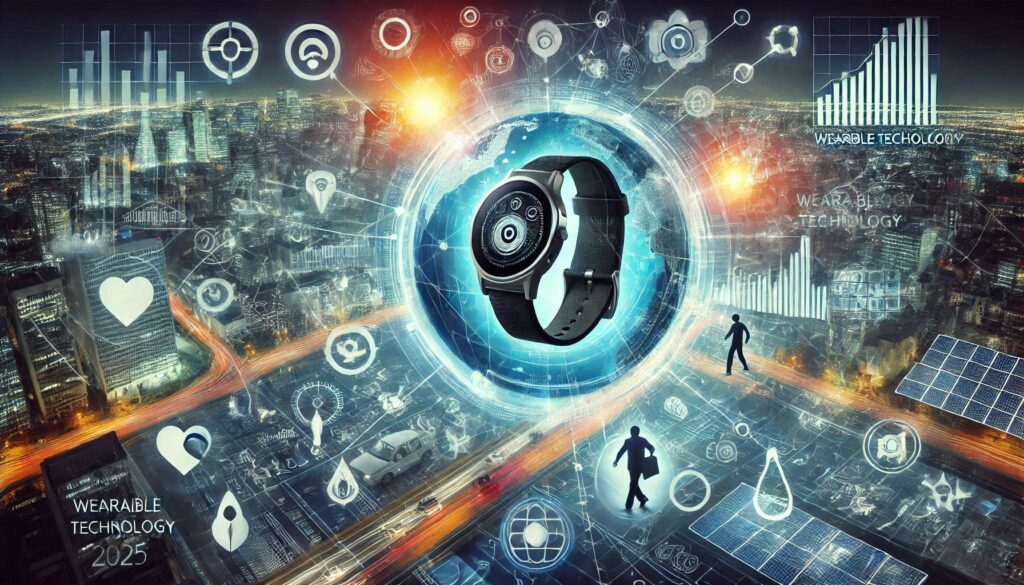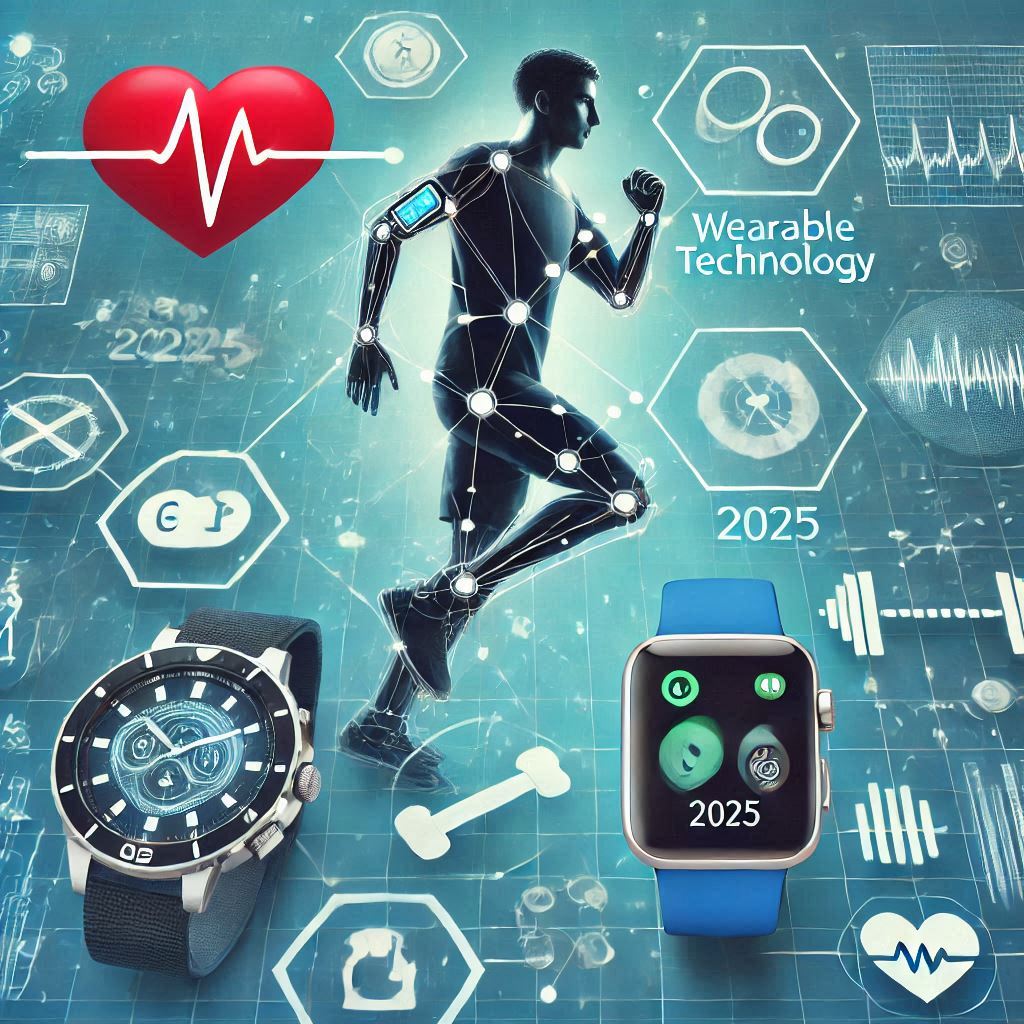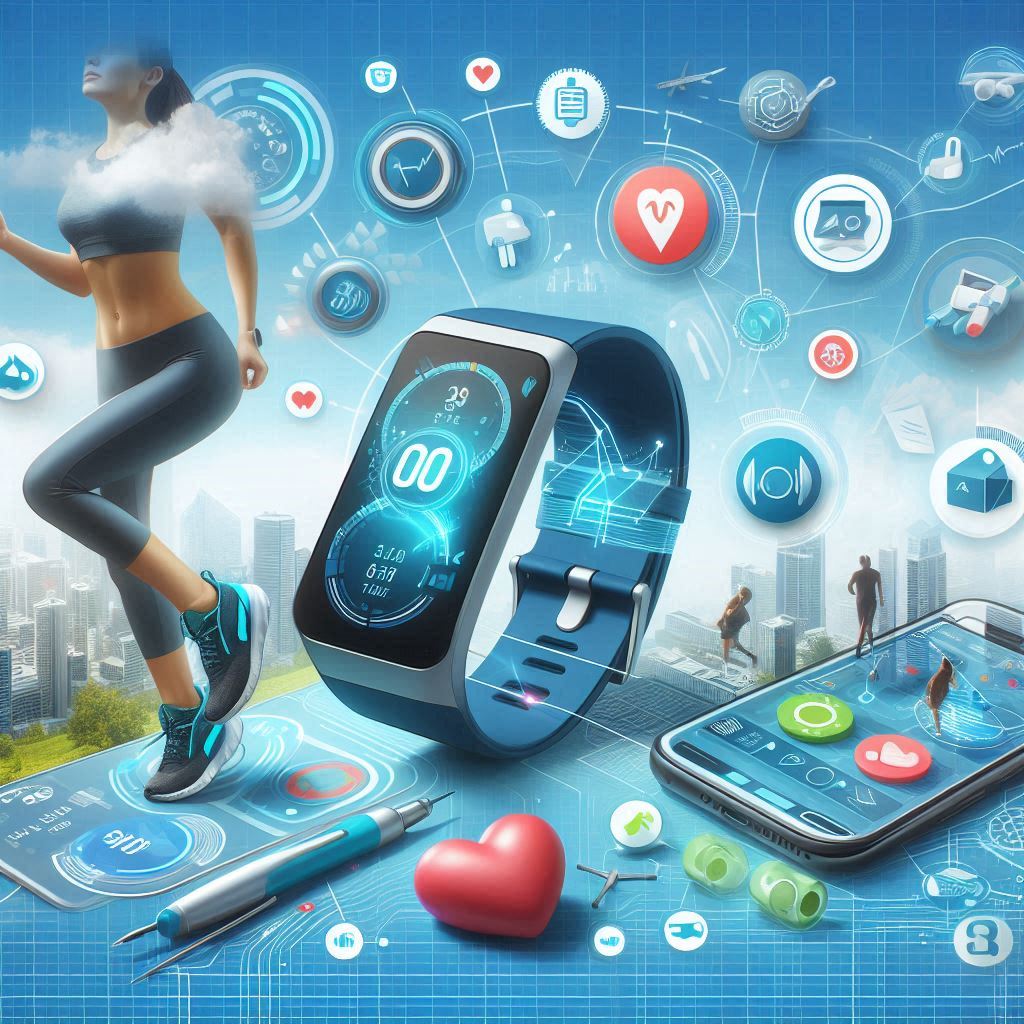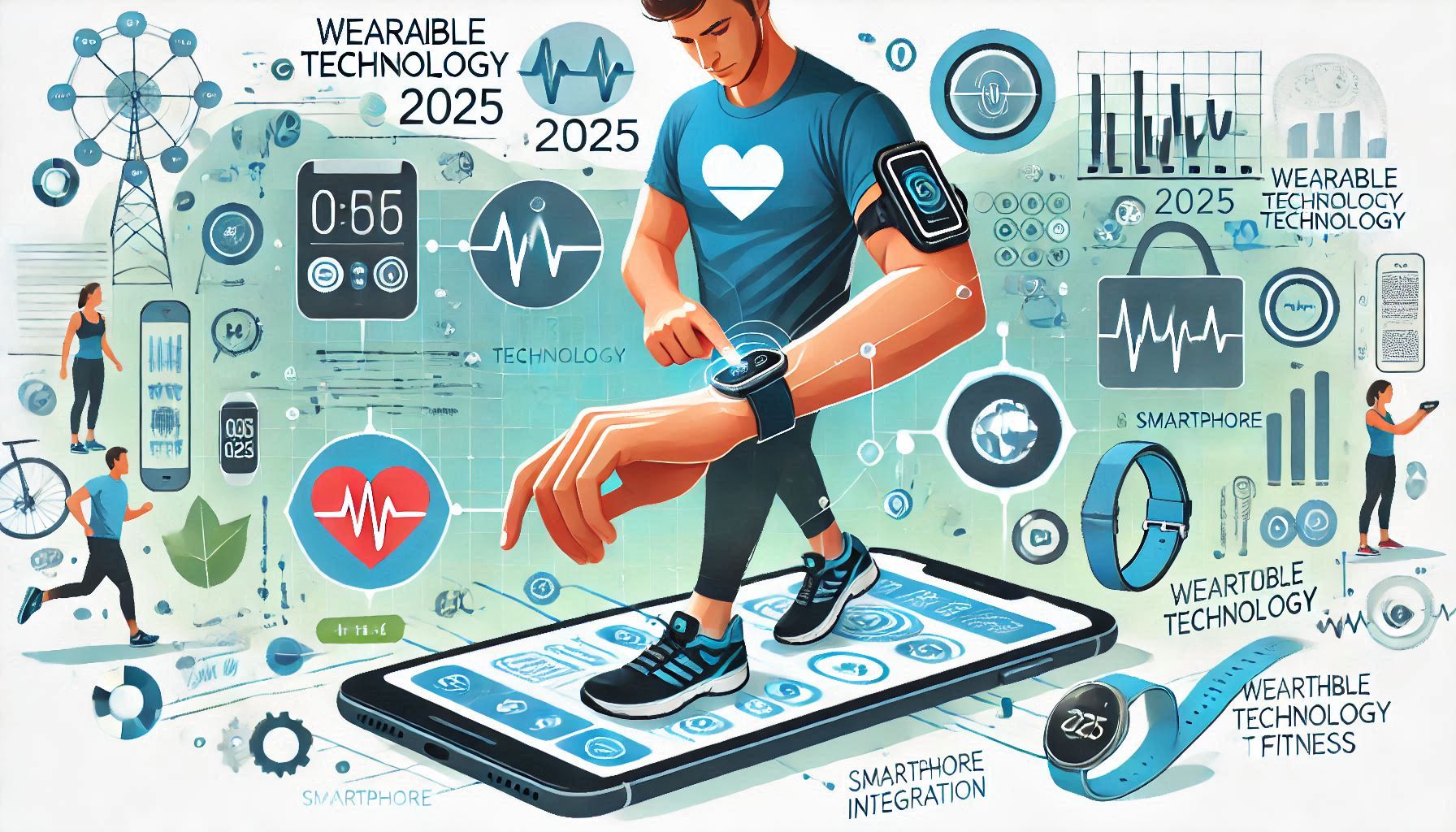How Wearable Technology 2025 and Smartphone Integration Are Shaping the Future of Health and Fitness

How Wearable Technology 2025 and Smartphone Integration Are Shaping the Future of Health and Fitness
How Wearable Tech and Mobile Phones are Becoming More Interconnected
How Wearable Technology 2025 and Smartphone Integration Are Shaping the Future of Health and Fitness: In the last decade, wearable technology 2025 has experienced tremendous growth, revolutionizing the way we interact with our environment, monitor our health, and manage our daily lives. From the first simple fitness trackers to the sophisticated smartwatches of today, wearable devices have significantly evolved, offering a wide array of features that extend far beyond traditional uses. As mobile phones continue to play an integral role in modern life, the integration between wearables and smartphones has become more seamless, unlocking new possibilities in areas such as health monitoring, fitness, productivity, and communication.
Introduction: The Rise of Wearable Tech and Mobile Phones
The synergy between wearable tech trends and smartphones is creating a more connected ecosystem, where data flows effortlessly between devices, providing users with more precise insights, actionable data, and improved convenience. Whether it’s a smartwatch that tracks your heart rate, a fitness tracker that monitors your steps, or smart glasses that offer augmented reality experiences, wearable devices for fitness tracking with smartphone syncing are increasingly designed to complement smartphones, enhancing their functionality and enriching the user experience. This interconnectedness is set to shape the future of health, fitness, and productivity in profound ways.
The Evolution of Wearable Tech: A Brief Overview
Wearable technology dates back to the late 20th century, but it was not until the early 2000s that it began to gain widespread adoption. Early examples included devices like the pedometer and heart rate monitors, which were simple and served niche purposes. However, as technology advanced, wearables grew more sophisticated, and by the 2010s, we saw the emergence of smartwatches and fitness trackers. These devices began to offer more features such as heart rate monitoring, GPS, and notifications from smartphones.
The key turning point came with the launch of the Apple Watch in 2015, a pivotal moment for the smartwatch industry. It was a device that not only functioned as a timepiece but also as a comprehensive tool for tracking health, fitness, and notifications. Apple’s success with the smartwatch paved the way for other companies like Samsung, Garmin, and Fitbit to enter the market with their own iterations of smartwatches and fitness trackers, each offering unique features and integrations.
In recent years, wearable tech trends have expanded to include smart glasses, smart clothing, and even smart jewelry, all designed to integrate seamlessly with smartphones to provide a holistic view of a user’s health, fitness, and lifestyle. These devices have become increasingly interconnected, with smartphones serving as the central hub for managing data, tracking metrics, and controlling wearable tech.
How Wearable Tech and Smartphones Are Integrating
The integration of wearable tech and smartphones is not just a trend—it’s a fundamental shift in how we use technology. Thanks to Bluetooth and Wi-Fi technologies, wearables and smartphones are able to communicate wirelessly and exchange data in real-time, making them a powerful combination for both fitness enthusiasts and those looking to stay productive throughout the day.

Seamless Data Syncing and Integration
One of the most significant ways in which wearables and smartphones are becoming interconnected is through data syncing. When you wear a fitness tracker or smartwatch, the device collects valuable health and fitness data, such as steps taken, calories burned, heart rate, and sleep patterns. This data is then transmitted to your smartphone via Bluetooth, where it is processed, stored, and presented in a user-friendly format. The smartphone serves as the central repository for this data, offering detailed insights into your overall health and progress.
For example, if you wear a smartwatch that tracks your workouts, the device might collect data about your exercise duration, heart rate, and calories burned. This information is sent to a companion smartphone app, such as Apple Health, Google Fit, or Samsung Health, where you can track your progress over time and set goals. Many apps also allow users to compare their data with that of others, creating a sense of community and motivating individuals to stay active.
Furthermore, many wearable devices for fitness tracking with smartphone syncing are now equipped with GPS functionality, allowing users to track their outdoor activities, such as running or cycling. Once the activity is completed, the GPS data is synced with the smartphone, where it can be reviewed and analyzed in detail. This level of integration not only makes it easier for users to monitor their fitness progress but also enhances their overall experience by providing more accurate and detailed insights into their workouts.
Health Monitoring and Management
The integration of wearables and smartphones has brought about significant advancements in health monitoring wearables. Devices like smartwatches and fitness trackers are now capable of tracking a wide range of health metrics, such as heart rate, blood oxygen levels, sleep quality, and even ECG (electrocardiogram) readings. This data is then sent to the user’s smartphone, where it can be analyzed and stored for future reference.
In some cases, the integration between wearables and smartphones goes beyond just tracking and recording data. Many smartwatches are now equipped with features that allow for proactive health management. For example, some smartwatches can monitor heart rhythms and detect irregularities, such as atrial fibrillation (AFib), and alert the user. This data can be automatically shared with healthcare professionals via the smartphone, enabling remote monitoring and early detection of potential health issues.
As health-conscious individuals become more reliant on wearable tech for health and fitness with smartphone integration, the ability to integrate these devices with smartphones creates a robust system for tracking long-term health trends. Apps on smartphones now provide a dashboard of health metrics, allowing users to visualize data trends and make informed decisions about their lifestyle and wellness routines. The potential for smartphone and wearables integration in healthcare is vast, as it opens the door for continuous health monitoring and personalized care.
Fitness Tracking and Performance Optimization
Fitness enthusiasts have long relied on wearables to track their workouts and measure their progress. As technology advances, wearables are becoming more sophisticated and capable of offering real-time feedback to optimize performance. Many modern fitness trackers and smartwatches
can track a variety of activities, from running and cycling to yoga and swimming, and provide detailed feedback on performance.
Mobile integration plays a crucial role in enhancing this experience. By syncing wearables with smartphone apps, users can gain access to advanced features, such as performance analytics, exercise recommendations, and personalized training plans. For example, smartwatches can measure the intensity of a workout, calculate recovery time, and provide insights into cardiovascular fitness. These features are valuable for individuals training for specific goals, such as improving endurance or increasing strength.
Mobile apps that sync with wearable health tech for accurate monitoring provide a broader ecosystem for users to track their progress and stay motivated. Many fitness apps allow users to connect with friends, share workout data, and participate in challenges. This social aspect adds an element of accountability and encourages users to maintain a consistent fitness routine. Moreover, smartphone apps can offer integration with external services, such as nutrition trackers, providing a comprehensive approach to health and fitness.

Productivity and Communication Enhancements
Beyond fitness and health monitoring, wearables and smartphones are also transforming the way we manage our productivity and communicate. Wearable devices, particularly smartwatches, have become powerful tools for streamlining tasks and staying connected throughout the day.
Smartwatches allow users to receive notifications from their smartphones, such as text messages, emails, and calendar alerts. This functionality eliminates the need to constantly check a phone, enabling users to stay on top of important communications while on the move. Additionally, many smartwatches now offer voice assistants, such as Siri, Google Assistant, and Samsung Bixby, which allow users to perform tasks like setting reminders, sending messages, and getting directions without having to pull out their phones.
The integration of wearables and smartphones also plays a significant role in improving productivity in professional settings. For instance, smartwatches can be used to quickly respond to emails, join conference calls, or check task lists, allowing users to stay focused on their work without being distracted by their phones. Some smartwatches also offer fitness-related reminders, encouraging users to stay active throughout the day by standing up, stretching, or taking short walks.
For individuals who work remotely or travel frequently, wearables and smartphones offer a seamless way to stay connected with colleagues and clients. This enhanced connectivity helps users maintain a balance between work and personal life, ensuring they stay productive while also taking care of their health and well-being.
The Future of Wearables and Smartphone Integration

As wearable technology 2025 continues to evolve, the integration with smartphones will become even more sophisticated. Wearable tech trends for 2025 and beyond indicate that we can expect more advanced features, including improved health monitoring capabilities, longer battery life, and more seamless integration with various apps and services.
In particular, future wearables will likely incorporate even more advanced sensors for monitoring health metrics, such as glucose levels, blood pressure, and hydration. This could revolutionize the way we manage chronic conditions and stay healthy. Furthermore, advancements in AI and machine learning could enable wearables to offer more personalized recommendations and insights based on individual data patterns.
Smart glasses and augmented reality devices are also expected to play a larger role in the wearable ecosystem, offering new ways to interact with smartphones and enhance productivity. With the continued growth of 5G networks, the potential for real-time, high-speed data transfer between wearables and smartphones will open up new possibilities for augmented experiences and real-time collaboration.
Conclusion: A New Era of Connectivity
The integration of wearable tech trends for 2025 and smartphones is transforming the way we approach health, fitness, productivity, and communication. By seamlessly syncing data between devices, wearables are able to offer users a more connected, personalized experience that enhances their daily lives. As wearable technology continues to evolve, the possibilities for smartphone and wearables integration are limitless, with advancements in health monitoring, performance optimization, and augmented reality on the horizon.
The synergy between wearables and smartphones is not just a trend but a fundamental shift in how we interact with technology. By unlocking new possibilities in health, fitness, and productivity, this interconnected ecosystem is paving the way for a more efficient, healthy, and productive future.

